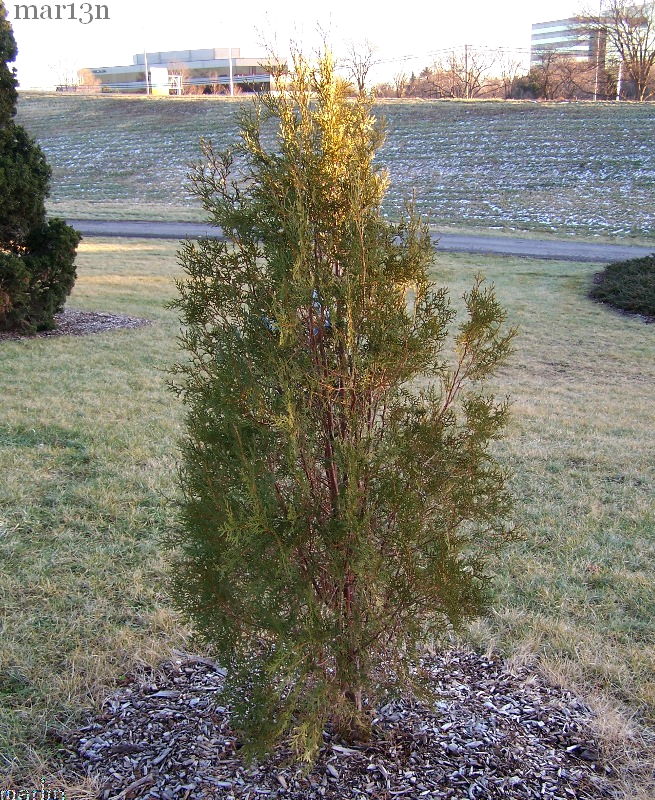Funeral Cypress – Cupressus funebris

Cupressus funebris, Kyneton Botanic Gardens, Victoria, Australia. Photo: Melburnian
Family Cupressaceae. Also commonly called graveyard, mourning, or Chinese weeping cypress.

Sometimes used in herbal therapy, flavanoids contained in tea brewed from the funeral cypress has been implicated in cases of acute kidney and liver damage [3]. Funeral cypress is native to China, where it grows to 35m.
One study showed funeral cypress to be one of three principle constituents (along with Pinus massoniana and Cunninghamia lanceolata) of the main coniferous forests at low elevations of the Three Gorges Reservoir area of China. It was found the shrub and herb layers dominant over the tree layer in these areas. [4]
Essential oils extracted from the leaves of C. funebris have been shown to be repellent and toxic in a fumigation assay against barklice Liposcelis bostrychophila [5] in the family Ectopsocidae [6]. Barklice first appeared during the Permian period, 295-248 mya, and they have become a modern-day pest of indoor kitchens in Europe and the U.K. [7].

“Worldwide use of herbal therapy has increased dramatically in recent years. Most herbal therapies were not regulated as medicines, and their adverse effects often were underreported. We report a patient who developed acute renal failure, acute hepatic failure, autoimmune hemolytic anemia, and thrombocytopenia after oral intake of hot-water extract of Cupressus funebris Endl (Mourning Cypress), which is rich in flavonoids. Her renal biopsy showed acute tubular necrosis, interstitial nephritis, and hemoglobin casts. The clinical course and pathological findings were consistent with flavonoid-induced acute nephropathy. We emphasize that flavonoids are not harmless and may induce acute life-threatening renal damage.” [3]
References
- USDA, ARS, (GRIN) National Germplasm Resources Laboratory, Beltsville, MD
- Flora of China, www.efloras.org, Cupressus funebris Endlicher, Syn. Conif. 58. 1847.
- Jia-Jung Lee and Hung-Chun Chen, Flavonoid-induced acute nephropathy by Cupressus funebris”
- Ruimei Cheng and Wenfa Xao,Biodiversity of main coniferous forests of Three Gorges Reservoir area
- J J Wang et al.Toxic effects of six plant oils with controlled atmosphere on Liposcelis bostrychophila
- Bugguide.net, “Family Ectopsocidae – Outer Barklice”
- King’s College London, “The pest status of Psocids in the U.K.”
There are thirty (many monotypic) genera and 142 species in the family Cupressaceae, now widely regarded as including the Taxodiaceae, previously treated as a family. The Cupressaceae are found in the fossil record as far back as the Jurassic Period, about 210 million years ago.

